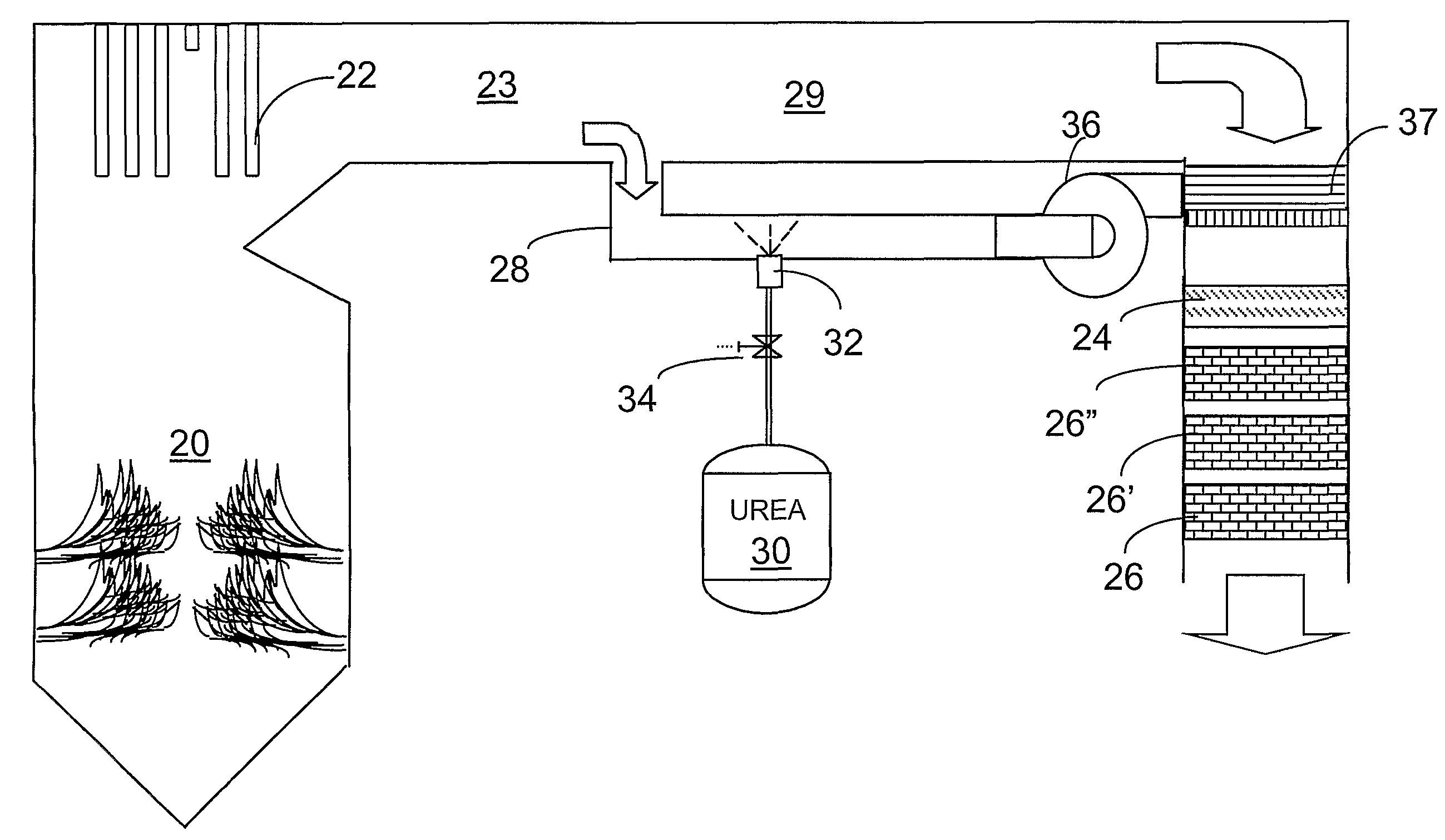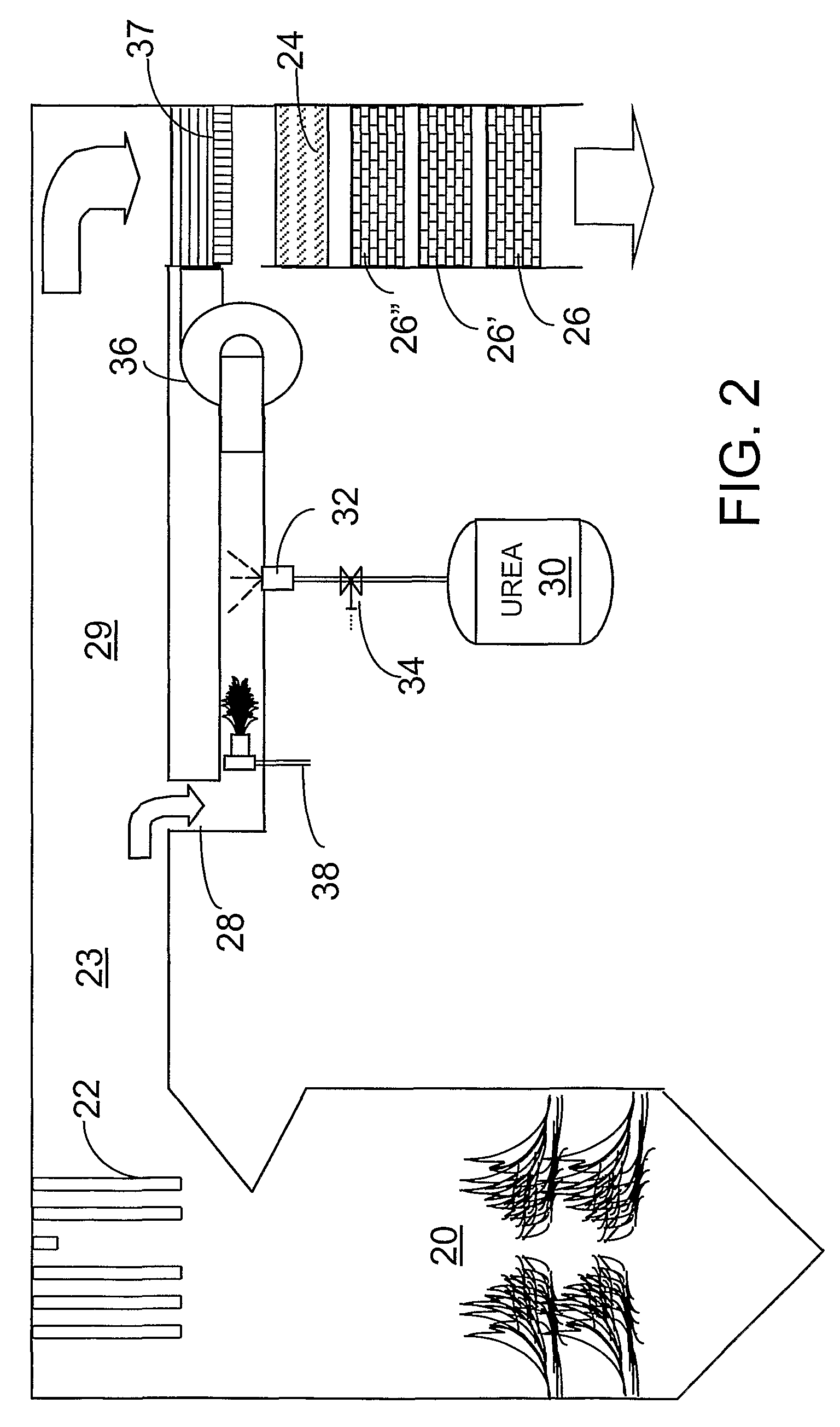SELECTIVE CATALYTIC REDUCTION OF NOx ENABLED BY SIDESTREAM UREA DECOMPOSITION
a catalytic reduction and sidestream urea technology, applied in the direction of machines/engines, separation processes, lighting and heating apparatus, etc., can solve the problems of urea safety, high temperature, and inability to use lower temperatures
- Summary
- Abstract
- Description
- Claims
- Application Information
AI Technical Summary
Benefits of technology
Problems solved by technology
Method used
Image
Examples
Embodiment Construction
[0035] The invention provides a urea-based SCR process that can advantageously utilize the enthalpy of the flue gas, which can be supplemented if need be, to convert urea to ammonia. There are several embodiments which will be described in preferred forms. It is intended, however, that various features of the embodiments can be utilized in combination with embodiments other than those specifically detailing the features. Common elements and features of the drawings will have common reference numerals throughout the drawings.
[0036] This new process makes use of the easy handling feature of urea reagent and provides complete gasification and good mixing employing a side stream gas mass to provide thorough mixing required for high levels of NOx reduction. In particularly advantageous embodiments, heat necessary for gasification is derived from the enthalpy of the combustion gases.
[0037] The process is effective with urea, but can utilize other NOx-reducing reagents capable of generat...
PUM
| Property | Measurement | Unit |
|---|---|---|
| Temperature | aaaaa | aaaaa |
| Temperature | aaaaa | aaaaa |
| Fraction | aaaaa | aaaaa |
Abstract
Description
Claims
Application Information
 Login to View More
Login to View More - R&D
- Intellectual Property
- Life Sciences
- Materials
- Tech Scout
- Unparalleled Data Quality
- Higher Quality Content
- 60% Fewer Hallucinations
Browse by: Latest US Patents, China's latest patents, Technical Efficacy Thesaurus, Application Domain, Technology Topic, Popular Technical Reports.
© 2025 PatSnap. All rights reserved.Legal|Privacy policy|Modern Slavery Act Transparency Statement|Sitemap|About US| Contact US: help@patsnap.com



